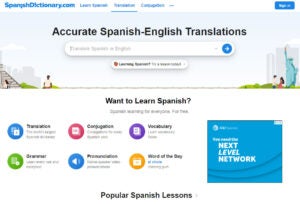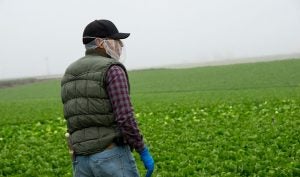Being a recent grad and new in the ag workforce, my biggest suggestion to students is to learn another language. Kids don’t learn other languages in school, which isn’t due to a lack of resources, but a lack of motivation. If the whole world speaks English, why should we learn a new language?
According to the National Center for Farmworker Health, as of January 2022, 78 percent of farmworkers across the U.S. are Hispanic. If you are a farmer, you know that this poses some challenges.
It’s not easy to teach a new hire everything they need to know about the job, especially when you can’t speak to them. Communication is probably the biggest barrier we see in agriculture when talking about the challenges with our workforce.
If you want to improve your Spanish, whether you’re almost fluent or just starting out, here are a few of the resources and tricks that helped me out the most on my journey to becoming bilingual!
First off, stop using Google Translate! Google Translate is all right if you are translating one word at a time, but when you start throwing whole paragraphs in there, things get funky. SpanishDict is a much more accurate translation platform. SpanishDict has both a website and an app, and it’s very easy to use!
Once you have SpanishDict, use that app every day! It has grammar lessons and games, conjugation practice, articles, and vocabulary lists. SpanishDict was my biggest study tool throughout school, and I still use it today! The lessons come with videos, so learning how to pronounce words is made easy!

An important thing to remember as you head into your Spanish journey is that languages are not black and white. Think of the words to get, receive, obtain, or earn. I don’t know the difference between them all, but I know that you receive gifts, not obtain them, but you obtain information, not receive it. Spanish is the same way, so don’t be confused when you look up the word get and you have 24 options to choose from!
When it comes to contextual words like “to get” versus “to obtain,” just ask an employee or coworker. Which translation is better for “to get” or “to obtain”? I do this all the time!
Another thing that I do is when I am studying Spanish: I forget about all the farm words. At home I focus on basic vocabulary and grammar; I learn my farm words at the farm. A lot of people try to rush into it and think that the basics don’t matter, but you need to learn to walk before you can run. Who cares if you can’t name all the crops you grow or equipment you operate — you will grow into it.
When it comes to learning farm words, it’s best to take it one area or event at a time. If you’re firing up the seedline, focus on those words and phrases first. This helped me alot when I was able to start speaking more Spanish. Learning vocabulary area by area is a really good way to study, but this method of learning and studying is best done on the farm with your Hispanic employees and coworkers. Just ask them, “¿Como se dice esto en español?” (How do you say this in Spanish?), and you’re guaranteed to have the correct word. Even the best online translators don’t get all the farm words right.
Maybe you’ve already done all that I have described, you know lots of words, you understand the basics, but you just can’t speak it! Forming sentences is hard, so here’s my tip for you:
This feels a little silly, but you should Google in Spanish how to do a really easy thing like “cómo ordeñar una vaca” (how to milk a cow) or “cómo cultivar un jardín” (how to plant a garden). This is a great way to find very basic articles and videos, hopefully with some of the vocabulary you already know! Reading articles and watching videos teaches you how to form sentences and use grammar correctly.

You need to think of your Spanish speaking journey as a trip through elementary school again. Kids don’t speak well in kindergarten, but by the fourth grade kids speak pretty well, just not very formally. Don’t be discouraged by slow progress!
Learning Spanish is an important skill because we have many Spanish-speaking workers in agriculture. In order to have them grow on the farm, we have to be able to communicate effectively with them.
If you want to explore more Spanish, check out Hola Qué Pasa, which is a site for easy Spanish news articles with quizzes and helpful hints. For something a little trickier, try reading The New York Times’ Spanish articles, or articles on Palabra, both of which have the same article in English and Spanish, making it easy to check your comprehension! For some great grammar drills, you should check out Conjuguemos, which for me isn’t the easiest site to navigate, but it does have great quizzes.
And if you know you should study but you just can’t, try listening to some music, because learning the Hispanic culture goes along with learning the language! My only suggestion here is to start with Vicente Fernández. You’ll win the hearts of all your employees and coworkers if you can baila bien to Vicente Fernández!
Elizabeth Maslyn is a born-and-raised dairy farmer from Upstate New York. Her passion for agriculture has driven her to share the stories of farmers with all consumers, and promote agriculture in everything she does. She works hard to increase food literacy in her community, and wants to share the stories of her local farmers.



